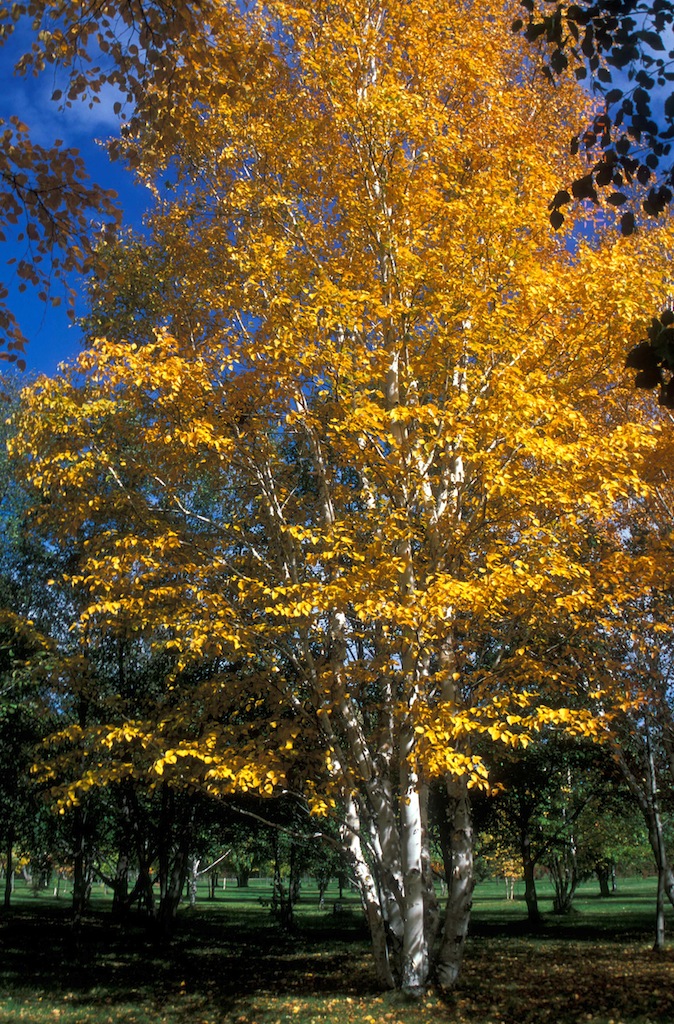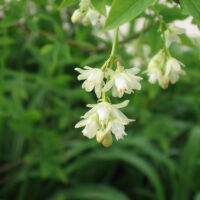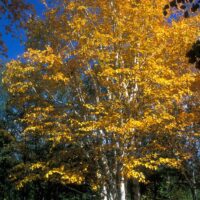Paper Birch 3-4′
$0.95
Scientific Name: Betula papyrifera
Zone: 2-6 (7)
Mature Height: 50-70 ft
Mature Width: 25-45 ft
Fruit: Small nuts within the catkins
Flowers: Catkins
Bloom Time: April
Growth Rate: Medium (12” – 24” per year), but with plenty of water and fertilizer can grow very quickly
Soil: Does best with acidic, moist, silty loams – but can grow in almost any soil
Drought Tolerance: Poor
Flood Tolerance: Moderate
Sun Requirements: Sun or part-shade
Fall Color: Creamy Yellow
Wildlife Value: Great food resource for mammals and many types of birds. Also provides great cover.
| From | To | Price |
|---|---|---|
| 10 | 24 | $7.75 |
| 25 | 49 | $6.25 |
| 50 | 99 | $3.80 |
| 100 | 499 | $2.20 |
| 500 | 999 | $1.25 |
| 1000 | * | $0.95 |
Description
White Birch is also known as Paper Birch or Canoe Birch and is the most ornamental of the birch family. The bark is chalky white, peels off in paper layers and is very flammable. This birch is found at the northern most tree line and grows well in the colder parts of our country. Paper Birch are the most common birch in the northern woods. In some places in the Upper Peninsula of Michigan there are almost pure stands of white birch. It is dizzying to be in one of these paper birch stands on a sunny day. The white and dark patterns on the bark present a wallpaper like effect in the forest. When the paper birch is young it has a somewhat pyramidal shape and oval in mature. Usually grown as a multi-stem tree, but is equally beautiful as a single stem. It is a fast growing tree, when given enough water and fertilizer these birches can nearly double in height yearly when young. The wood of the white birch is brown, weak, close grained, not durable, soft, used for spools, wood pulp, and fuel. The White Birch leaf is triangular, long-pointed, irregularly lobed, saw toothed, 2-3” long, dark green, in summer and yellow in the fall. The leaf is narrow, oval and serrated. The flowers are long (about 1”) catkins and the seed is produced in large quantities (although seed litter is minimal). These trees transplant easily in the spring, but don’t do well when dug in the fall. Paper Birch is a tree for northern climates as it does not do well with heat stress south of Cincinnati to St. Louise line. It handles moisture well and prefers full sun. White Birch is susceptible to the Bronze Birch Borer and in some areas it has reduced the population of birch substantially. The symptoms of the birch borer includes die-back in the upper portions of the tree. The branches take on a lumpy look when infested with the birch borer. To help avoid the borer, plant on rich and moist soils. If you live in a warmer climate or live in an area with the presence of birch borer you may need to grow the Japanese Birch. Paper Birch is easily propagated by rooted cuttings. This tree takes some maintenance, but with a little luck and some work you will enjoy many years with your beautiful tree.



